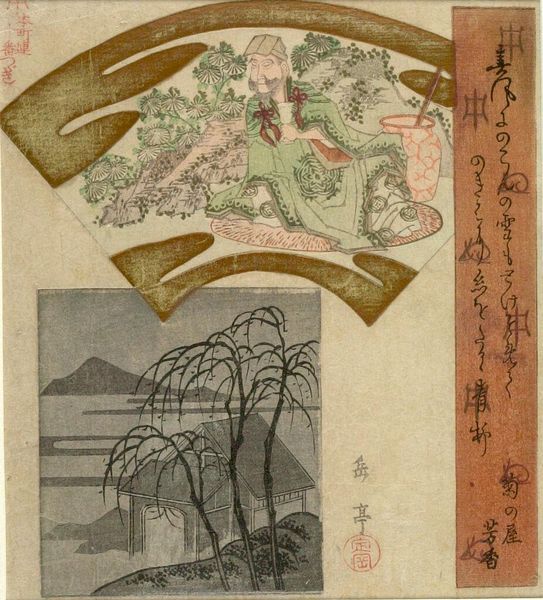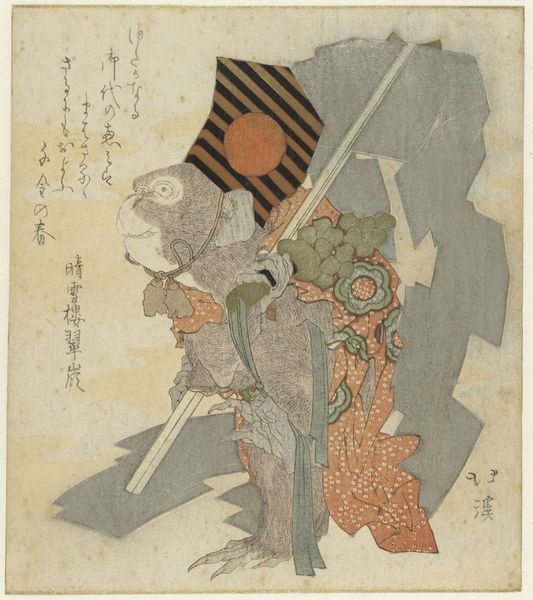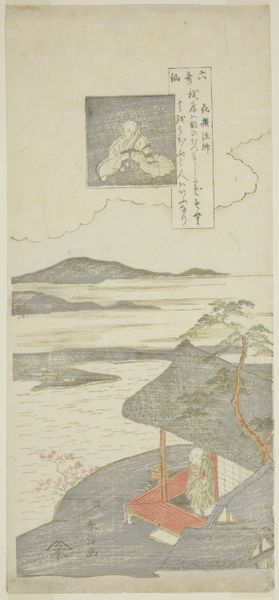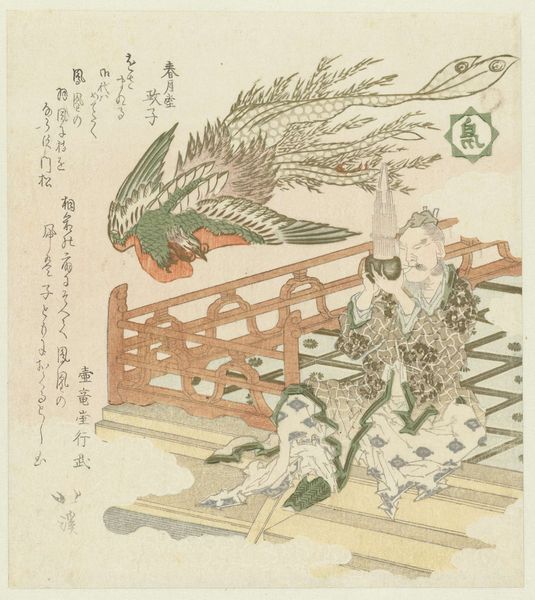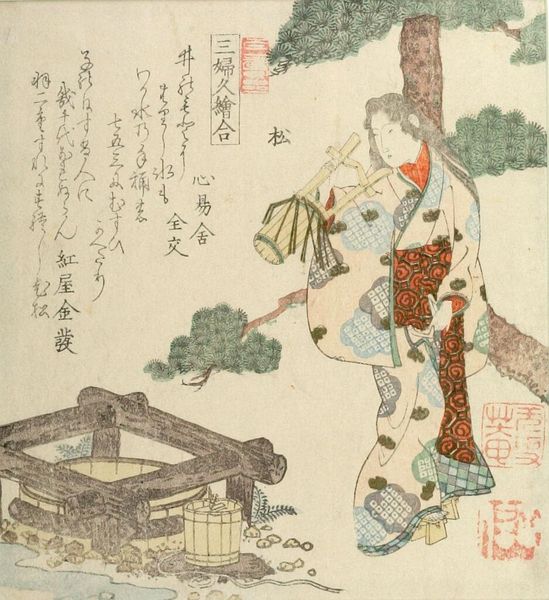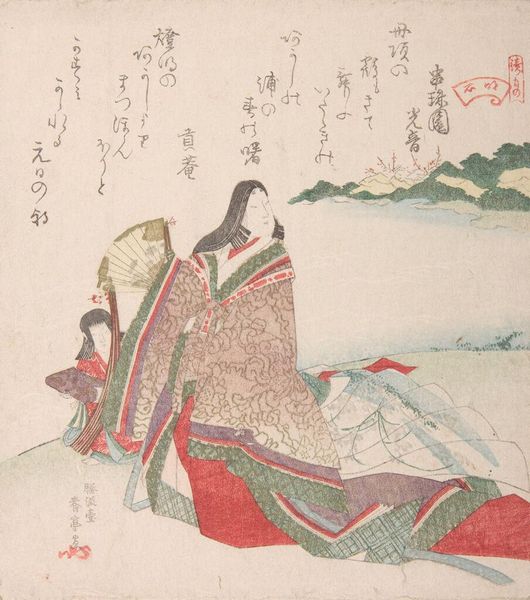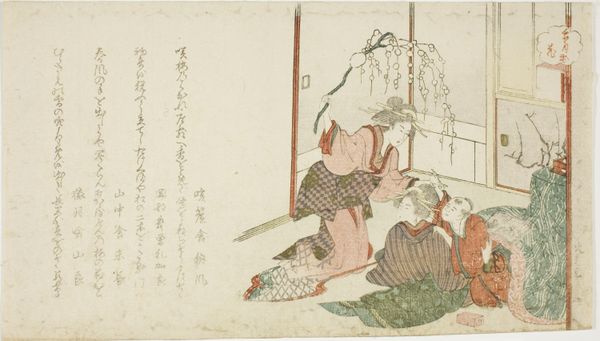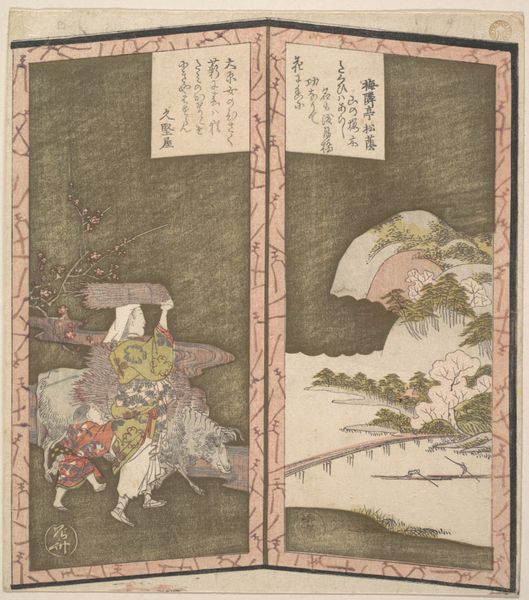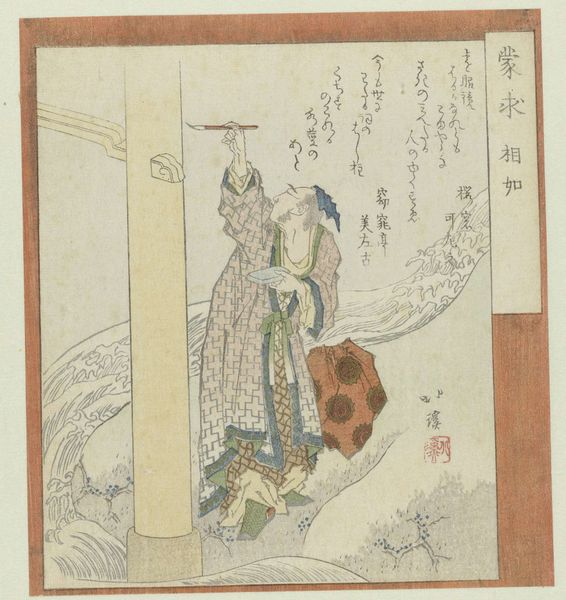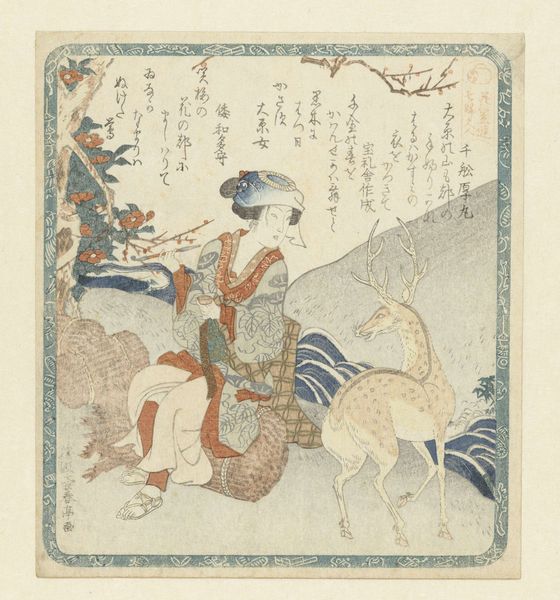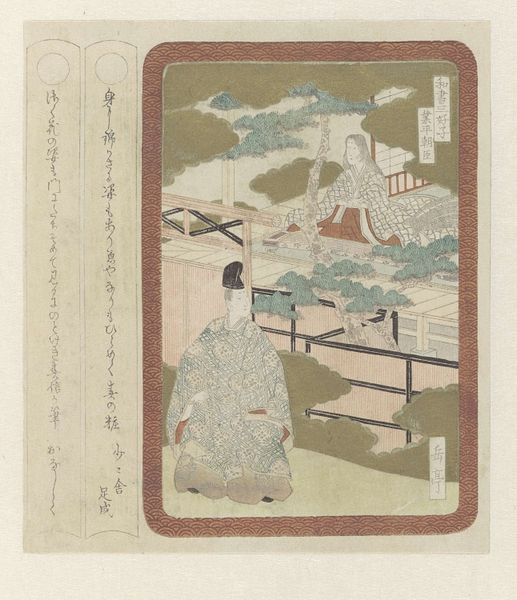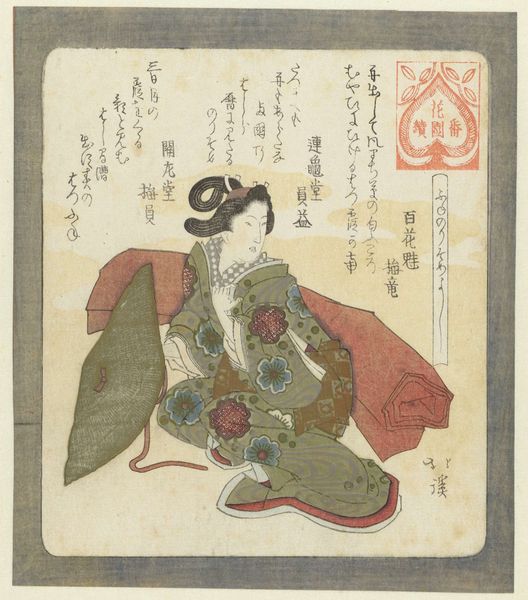
print, watercolor, woodblock-print
#
portrait
#
water colours
# print
#
asian-art
#
landscape
#
ukiyo-e
#
watercolor
#
coloured pencil
#
woodblock-print
#
watercolor
Dimensions: height 212 mm, width 187 mm
Copyright: Rijks Museum: Open Domain
Curator: What a striking piece. The muted colours create an immediate sense of tranquility. It almost feels like a page out of an ancient book. Editor: I can see that. We're looking at "A Chinese Sage and Landscape with Willows" by Yashima Gakutei, dating back to around 1822. It's a woodblock print with watercolor touches, currently housed at the Rijksmuseum. Curator: A woodblock print, huh? The detail is fascinating for that medium. The composition with the fan shape at the top and the landscape at the bottom makes for a strong visual hierarchy, doesn't it? Editor: Absolutely. The ukiyo-e tradition heavily influenced Gakutei’s prints. Considering the production, these prints weren’t conceived as precious objects initially. They were distributed among a growing public with the rise of consumer culture and booming publishing ventures of the Edo period. Curator: Fascinating. The sage seems almost... detached, ensconced within the stylized fan illustration. What kind of cultural value did prints like these convey to their original audience? Was it about simple entertainment, political messaging, or something else entirely? Editor: All those factors were in play, for sure. These artworks served as social documents. We see class structures represented through the patron-artist system, the skills of the block carvers and printers central to ukiyo-e, and consumer appetites demonstrated in the popularity of certain images. Gakutei made multiple prints, so clearly there was a demand. Curator: I can imagine so. The willows and simple building in the square beneath are so evocative of traditional aesthetics, and that balance with the contemplative sage says something about the era’s fascination with integrating learned scholarly practices with imagery representing the beauty of the natural world. It really comes down to accessibility and social class and who has access to which forms of visual messaging and knowledge. Editor: I think so. Ultimately, it shows that the supposed 'high' and 'low' distinctions in art become extremely blurred once we engage with the materiality and reception of something like an ukiyo-e print. It’s interesting that they used watercolor on woodblock prints. Curator: Precisely! What's revealed is so much more complex than the straightforward 'artwork'. It has so much to offer to those that analyze through its history.
Comments
No comments
Be the first to comment and join the conversation on the ultimate creative platform.
